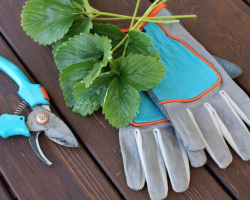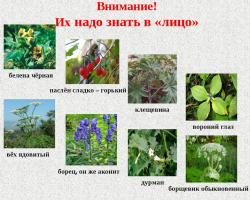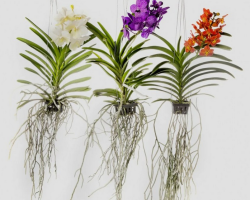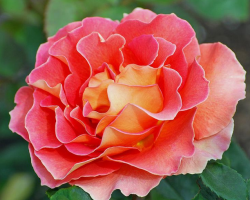Gardeners who are fond of landscape design are often planted on the Geicher site. This plant is characterized by an unusual appearance, and gives the garden an exquisite and original style.
Content
More details about how to properly grow Heyera will be told in this article.
Geicher: Description
- Geichera bushes are quite dense. They form leaves with teeth along the edges, which are formed on elongated cuttings. Leaves are of different shapes and colors.
- There are bushes with black, scarlet, burgundy, pink, yellow, green and purple leaf plates. The breeders even deduced a variety with silver leaves. On the plates you can notice various patterns, spots and stripes. They give the plant unusual.
- There are varieties with leaves that have corrugated surface. However, varieties with smooth and wrapped sheet plates are considered the most common.
- Flowering of culture is observed the entire summer season. Often, subject to a favorable climate, flowers can be saved until November. Flowers come in different shades, so you will certainly find the best option for yourself. They gather in a panicle, and form the shape of a bell.
- On the bushes, the fruits and fakes are formed, where the seeds ripen. They are no more than poppy grain. In 1 g, 20 thousand seeds are placed.

Varieties of geichera: photo
Thanks to the work of breeders, about 70 types of geihera were deduced. Most of them are found in the mountainous regions of America and Mexico.
Most often, in the sections of gardeners, you can find such types of geiher:
- Blood-red geehera. The plant is characterized by bloody inflorescences and light green leaves. The leaf plate forms a dense outlet, and has a round or gear shape. Most varieties of this species are characterized by the appearance of white or beige spots on the leaves. The height of the peduncle is half a meter. Common varieties include Variegat, Monet and Hercules.

- Hairy. The leaves are voluminous, with a surface resembling velvet texture. Cuttings are also covered with pubescence, which caused this name. Variety Bronze Wave characterized by bronze leaves, the diameter of which is about 18 cm. Rachel It has light pink flowers and peduncles.

- Cylindrical. Flotons grow up to 100 cm in height. On them you can see the flowers of snow -white, light green, pink and coral shade. The pedunks are short, and the leaves resemble the shape of the heart. The sheet plate is greenish, with gray patterns. Famous varieties include Greenfinch (flowers creamy green) and Highperion (Red-pink flowers).

- Small -flowered. The leaf plate resembles a maple. It is covered with silver spots. The inflorescence is characterized by a panicle. Flower stalk is about 60 cm in height. It consists of small flowers, which are characterized by a cream-pink shade, and orange anthers. A well -known variety is considered PELES Permple and Bressingham Bronze.

- American. The leaves resemble the shape of the heart. Of these, a socket is obtained, about 17 cm high. The lower part of the sheet is brown-purple. The size of the peduncle is not less than 45 cm. Bridles consisting of yellowish and greenish flowers are formed on them. The most famous variety of this species is considered Green Spice. It is characterized by greenish leaf plates on which there are silver spots. The leaf plate can change its shade to lemon, based on the growing season. Spots can increase, and a purple shade is formed around the veins.

- Hybrid. At first glance, it may seem that this species is similar to the blood-red Heyera. However, it is much larger. Flowers can be snow-white, bloody and light red. The main part of the leaf plate is emerald, but has bright veins and spots of cream shade. Famous varieties include - Beauty Color, Cankan, Ruby Wale.

- Crust -leaf. It is characterized by cold resistance, therefore it is suitable for landing in the northern regions of the country. Regardless of the degree of cold, retains its usual appearance.

As well as such varieties:









Lemon shade



Geichera: Conditions at home
- There is nothing unusual in growing geychera. However, there are several recommendations that are better to adhere to. If you are not going to collect seeds of decorative decrees in the fall, then it is better to cut off the peduncle immediately after its appearance. It is knocked out of the shape and size of the bush, making it untidy.
- If you grow flowering varieties, then peduncles should be removed immediately, at the end of flowering. When the leaves in the lower part of the bush fall, the plant becomes untidy. It allows you to fix the situation transplant Heikers into a deep hole with a lump of earth. So you can hide the bare trunk.
Geichera: Planting and Care in open ground
- If you plan to decorate your garden section of Heyera, adhere to the basic rules for landing. To get started, decide with terms, and landing.
- It is important to choose the optimal place for the plant to feel comfortable. More about this will be described later.
Planting Heihera in the spring in open ground
- Gayera should begin to plant at the end of March or early April. It all depends on the climatic features of your region. The plant is shade -tolerant.
- It is preferable to land next to other crops so that they create a small shadow. So you protect the decorative flower from direct sunlight. Experienced gardeners are advised to plant Heiker from the east or west of the garden.
- It is important that the bushes fall sunlight, But, in a small amount. If you plant varieties with bright leaves, under the influence of the sun they will be even brighter.
- Varieties with bloody leaves should be located in sunny areas, Otherwise, under the influence of shadow, the leaf plates will be green. Choose areas that protect the flower from cold and drafts.
The right choice of soil for geichera
- Heikher is an ordinary plant that grows in any soil. The only nuance that needs to be taken into account is the acidity of the soil. Plant the plant in areas whose acidity is in the range of 5-6 pH.
- Some gardeners note that Heihera can grow on a soil with a high content of stones. If you want to grow a magnificent and spectacular bush, choose areas with loose and nutritious soil. Thanks to this, water will not stagnate in it, and good air exchange will occur. This will prevent root rot.
How to plant a Heyera correctly?
- To plant a Heiker, you can use several ways - using seeds or seedlings. The first method implies sowing seeds in loose and well -moistened soil. The depth of sowing is 3-5 cm. After the hole, you need to close.

- The best option - planting seedlings. It must first be grown at home, and then transplanted to a permanent place. The depth of the hole should be 4 cm, and the distance between the bushes - 20 cm.
Heikher Flower: Care
- During the first 10-12 months after planting, it will not be necessary to apply fertilizers. Subsequent introduction of nutrients should be carried out during the growing season.
- For deciduous crops, mineral fertilizers mixtures. For varieties that bloom, use universal substances intended for flowering crops. Fertilizers can be purchased in specialized stores for the garden and garden. For geichera, half of the dosage prescribed on the packaging of the manufacturer will be enough.
- Water Plants need regularly. The exact deadlines depend on the climate of your region. The soil cannot be allowed. Water bushes with an interval of 2-3 days. This should not be done often, because a large amount of moisture can provoke root rot. If you live in the region with a arid climate, water the beds twice a day - in the morning and evening. Leyite warm water so that it does not touch the leaves. Otherwise, burns may appear on them. To avoid problems with the loosening of the soil and weeds, cover the trunk circle of the bush with a 10-centimeter layer of mulch. This will help straw, hay or wood sawdust. So moisture will not evaporate.
Methods of propagation of geichera
There are several ways to reproduce geychera. More information about each of them will be described later.
Dividing the bush
Step-by-step instruction:
- Dig the plant with the roots, and divide it into 4-5 parts.
- Cut the open stem to the young layer. The shoots that have dried up, cut, until living buds seem. They can be seen in the sinuses of dry leaves.
- Make long roots a little shorter. If there are signs of rot on them, cut them, and treat the cut place with crushed coal.
- Pour 1 tbsp into the hole in which you will experience the plants. l. ash and 100 g of compost. The size of the landing pit should be 30x30 cm.
- Place the element of the bush in the pit, and sprinkle the roots with earth. Pour the plant 5 liters of warm water, and cover a little from the sun.
- After 40 days, when new young roots appear, transplant the Heiker to a permanent place.

Propagation of geychera seeds
- If you prefer to propagate the Heiker with seeds, adhere to some recommendations. When you buy the seed, look carefully at the date of package and shelf life. If it is in a foil package, then the shelf life is 18 months. You can also collect seeds yourself from adult bushes. You need to sow them within six months, otherwise they will lose vitality.
- To sow seeds, select a wide plastic container that is equipped with drainage holes. The height of the container should be no more than 5 cm. Use not dense soil mixed with river sand. Put the soil mixture in the oven, and warm up for 3 minutes. By this you will disinfect her. Carry out only after the soil is cooling. It is better to conduct it in March.
Basic rules for sowing:
- Mix sand seeds. So they will be more uniformly distributed.
- Do not deepen the seed. Loose the soil, smooth it and pour it. Pour the seeds on top and put the container on the windowsill. Cover with any material from which there are greenhouses (glass or polyethylene).
- The first shoots will appear after 14-21 days. Every day, during this time, ventilate the container.
- When 3 sheets are formed on plants, dive. The distance between the bushes should be 5 cm.
- In May, take the container on the street, and put in partial shade. After digging it into the ground to strengthen the shoots.
Geichera: Diseases and insects
- The immune system of geichera is developed, so it is rarely affected by diseases and parasites. However, the most common diseases include rust, spotting and powdery dew. They appear due to poor-quality care.
- To remove signs of mildew, manifested in the form of white plaque on the leaves, use available fungicidal preparations. An effective remedy against spotting and rust is a solution of burgundy fluid. Spend spraying every 2 weeks.
- Of the pests that amaze Geyra, you can distinguish snails, slugs, caterpillars, leaf nematodes and slugs. Insecticides will be effective against them - "Aktellik" or "Karbofos". Mustard water is also suitable.
- Pest prevention is quite simple. It is enough to pour sawdust mixed with Creoline around the bush, or backed lime.

How to prepare a geysher for winter?
- If in the fall you noticed wilted and yellow leaves on the bushes, do not rush to clean them. They will help the plant survive frosts, and keep the root system in the warmth.
- Do not forget to cover the Heiker for the winter using oak leaves. With the advent of spring heat, remove the shelter, and cut the dry and wilted leaves with a secateur.
If you plan to decorate your garden section with Heyera, first study the features of its cultivation. Despite the unpretentiousness of leaving, culture needs proper watering and top dressing. If you follow all the recommendations prescribed in this article, you can grow beautiful and bright plants that will become the hallmark of your garden.
We will also talk about planting and caring for such plants and flowers:
- Chrysanthemums
- Decorative honeysuckle is a kaprifol
- Lilies
- Young
- Margarita
- Baptia
- Terry grade of lilacs - beauty Moscow







